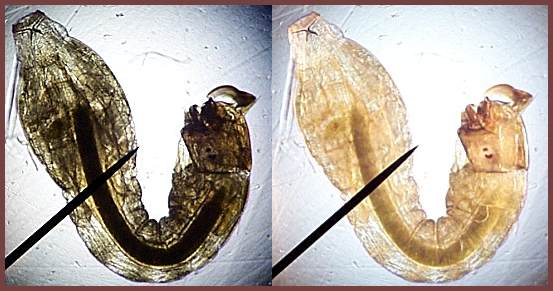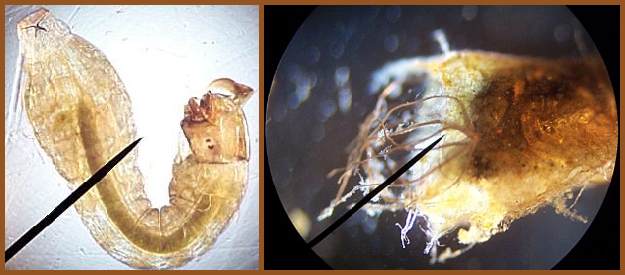

The left photo was lit from beneath with fluorescent light, and the one on the right with incandescent from the top. The dark streak down the middle, inside the critter, is its breakfast. The extension protruding from the mouth is a labral fan. The worm actually has two although only one is visible here. The fans direct food particles into the worm's mouth as they flow by. These larvae will pupate, probably in a few days, then the adult flies will emerge and leave the empty pupae shells stuck to the rock.
The following is a pupa shell that these worms construct from grit, vegetation and other assorted debris that flows by. There is a worm inside this shell, and the antennae that guide the food into the mouth are clearly visible. A look under the rocks of your waterfall or in your fast flowing stream should reveal dozens, perhaps hundreds, of these cone-shaped pupae, some inhabited and some vacated.
